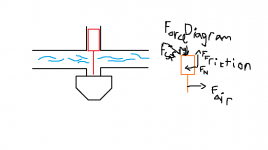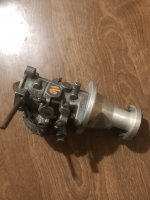I think you're pedaling more bullshıt than I have capacity for, nothing more. Let's go with the or something... meaning I decided a while back that I really just don't fu★king like you, at all. I only play nice to keep Denny quiet and Pancho off my a★s.
Or something like dementia. You
did say you're old and have
probably forgotten a lot of things, which suggests that you can't remember whether you knew something to begin with or not. Or Korsakoff syndrome.
Suck or blow is irrelevant. Pressure is pressure, and when you get enough in volume and velocity slide carbs tend to misbehave regardless of which side if the slide its coming from.
This too is nonsense and you still haven't answered the question. I think it's because you can't. Am I wrong?
When I talk about VE, I’m talking about something like this definition.
“What is Volumetric Efficiency? Volumetric efficiency (VE) is the actual amount of air flowing through an engine, compared to its theoretical maximum.”
with this definition, forced induction can increase the “amount” of air. Perhaps not the volume of air but the density and therefore the “amount” or number of molecules. But it probably also increases the volume of air per rotation.
How does VE not increase with boost.
NA- maybe lungs filled 85%
boosted- lungs filled 100% with denser air
perhaps the better word would be something like “effective VE” the same way people talk about effective CR with boost compared to static or NAdynamic.
The carb size calculation used, uses displacement and a constant K related to VE to determine the amount of air flowed. A blower flows more air so you need to increase that constant, K. If VE doesnt increase, my imaginary “effective VE” surely does.
I'm certainly not knocking you if you prefer to think of it that way.
That said, forced induction does not increase air volume; it increases density. Think of a boosted engine as a naturally aspirated one in a denser atmosphere. An engine with 75% VE would still only pull in 75% of its swept volume of that denser air. The mass airflow will be higher and the engine will make more power, but the pumping efficiency still remains constant. Mass airflow is what all the engineering calculations deal with.
If the engine sim software requires some constant to account for total engine airflow that way, that's fine. Some speed-density EFI computers do that although the "VE" number has no units and doesn't correlate to actual engine VE.
Can you both calm down this is a forum not twitter
This is what forums have been like since long before you were born or Twitter existed. It's part of the course of...discourse.



